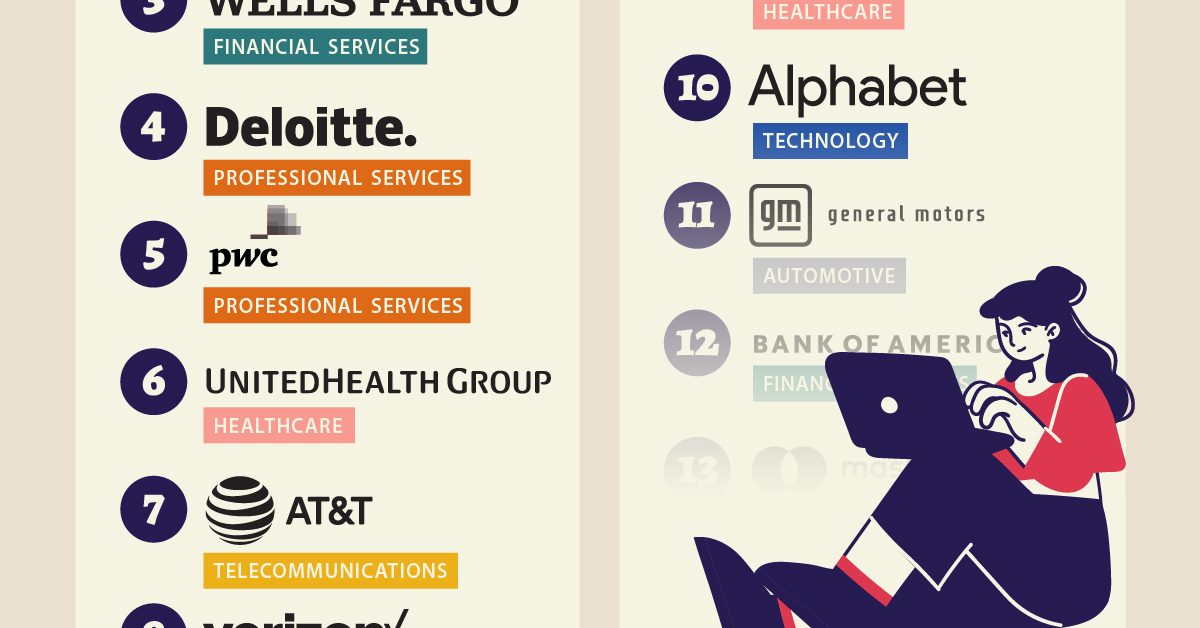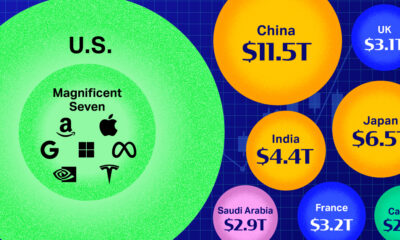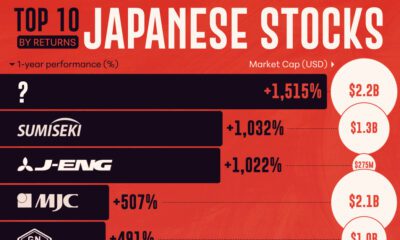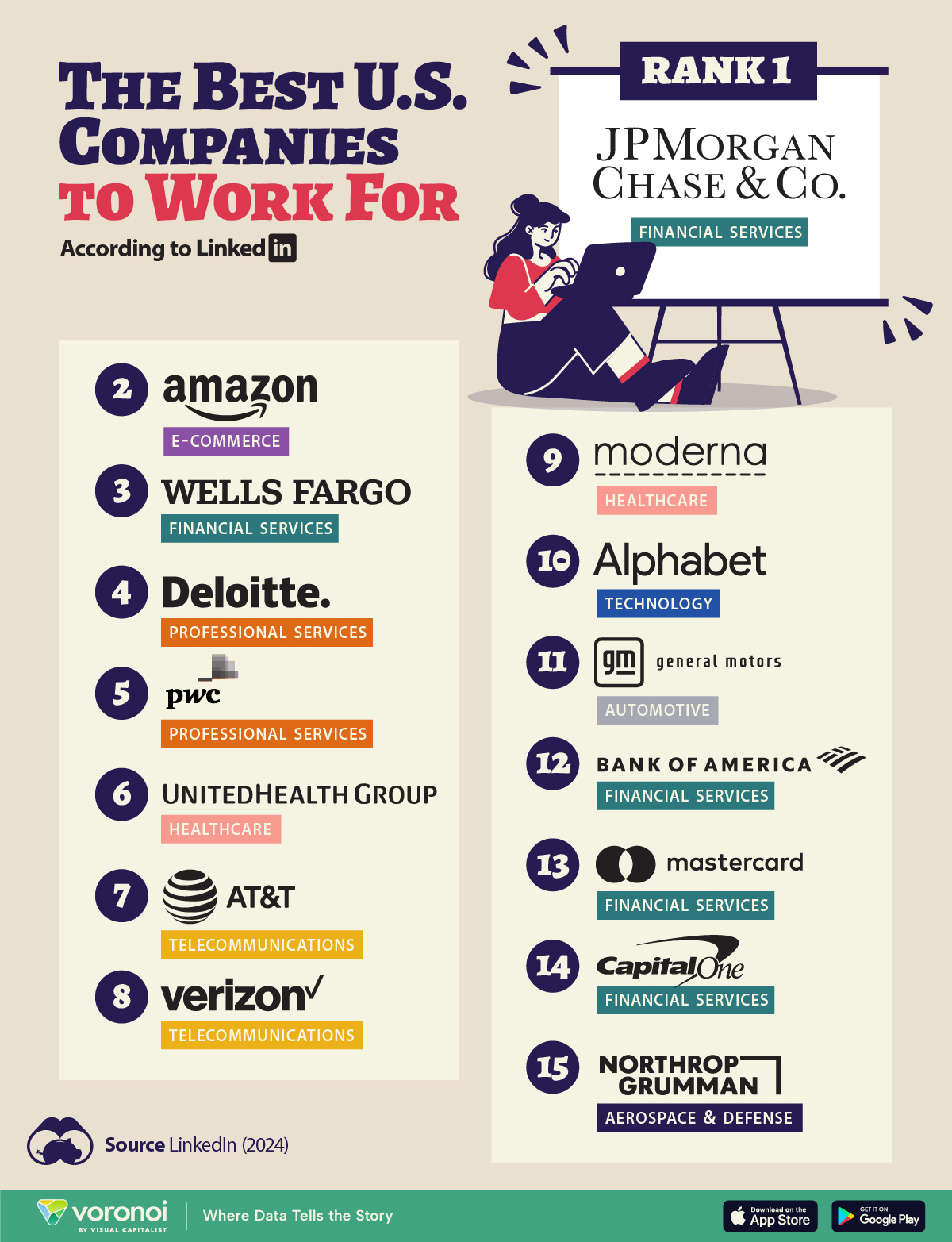Markets
Animation: The Basics of the Stock Market
Since its inception, the stock market has been one of the most powerful and consistent sources of wealth creation available.
Although stocks see more volatility than other assets, they have also averaged a real return of 6.7% per year between 1925 and 2014, compared to just 2.7% for bonds and 0.5% for cash.
And over long periods of time, the extraordinary power of compounding can turn this differential into a wealth generation machine.
But What is a Stock Market?
There is no denying the stock market’s unparalleled ability to create wealth, but that doesn’t mean it’s always an easy sell to newcomers.
For most people, the very mention of the stock market conjures up images of a frantic floor at a busy stock exchange, people in suits yelling “Buy!” or “Sell!”, or even the sensational media coverage that can dominate the news cycle.
Today’s animation provides an easier reference point for potential newcomers – it comes to us from TED-Ed and it highlights the basics of the stock market, as well as how it works.
By understanding the original purpose of the stock market and also its history, we can better understand how the modern market applies to wealth creation.
In a nutshell, it provides a way for investors and companies to share the profit (and risks) of bold new endeavors, such as trying to invent a new cancer cure, discovering natural resource deposits, disrupting old business models, or innovating advanced technologies.
The stock market has allowed companies ranging from Amazon to Starbucks to succeed, and for investors to share in that success.
Basics of the Stock Market
Here are some other key questions that the animation helps to answer about the basics of the stock market:
How does a company get on the market?
A company needs to have an Initial Public Offering (IPO). This is traditionally done through big investment banks that help advise companies on the potential value of their company, and the market for their stock. More recently, companies like Slack and Spotify have IPO’d using a less traditional route.
How does going public help a company grow?
In the right scenario, listing on a stock market gives a company access to more capital. With more money, the company can make investments into new products and markets.
How is a stock price determined by the market?
By allowing millions of people to buy and sell shares of the company using the same set of information, it creates transparency and liquidity. Over time, this pushing and pulling creates a “fair” price for the stock.
What else influences stock prices?
Stock prices are not only influenced by what a company does – they are also influenced by external factors such as government regulations, market forces, competition, and changes in technology. Investor sentiment also plays a role.
Why invest for the long term?
Because short-term noise in the market can be hard to predict, most professionals promote long-term, reliable investment methods.
Some examples of this in practice would include low-cost index funds, mutual funds, or simply building your own diverse portfolio of stocks, bonds, and other investments for the long haul.
Past and Future
The stock market is very different today than it was when the first shares of the Dutch East India Company started trading in the 17th century.
Although the financial industry has increased in sophistication since those times, it still has the same general purpose – and it’s easier to get started investing than ever before.
Markets
The Best U.S. Companies to Work for According to LinkedIn
We visualized the results of a LinkedIn study on the best U.S. companies to work for in 2024.

The Best U.S. Companies to Work for According to LinkedIn
This was originally posted on our Voronoi app. Download the app for free on iOS or Android and discover incredible data-driven charts from a variety of trusted sources.
In this graphic, we list the 15 best U.S. companies to work for in 2024, according to LinkedIn data.
LinkedIn ranked companies based on eight pillars: ability to advance, skills growth, company stability, external opportunity, company affinity, gender diversity, educational background, and employee presence in the country.
To be eligible, companies must have had 5,000 or more global employees, with at least 500 in the country as of December 31, 2023.
Data and Highlights
Financial institutions dominate the ranking of the best U.S. companies to work for in 2024, with JP Morgan Chase & Co. ranking first.
| Rank | Company | Industry |
|---|---|---|
| 1 | JP Morgan Chase & Co. | Financial Services |
| 2 | Amazon | E-commerce |
| 3 | Wells Fargo | Financial Services |
| 4 | Deloitte | Professional Services |
| 5 | PwC | Professional Services |
| 6 | UnitedHealth Group | Healthcare |
| 7 | AT&T | Telecommunications |
| 8 | Verizon | Telecommunications |
| 9 | Moderna | Pharmaceuticals |
| 10 | Alphabet Inc. | Technology |
| 11 | General Motors | Automotive |
| 12 | Bank of America | Financial Services |
| 13 | Mastercard | Financial Services |
| 14 | Capital One | Financial Services |
| 15 | Northrop Grumman | Aerospace & Defense |
J.P. Morgan has a program that offers opportunities for candidates without a university degree. In fact, in 2022, 75% of job descriptions at the bank for experienced hires did not require a college degree.
Meanwhile, Deloitte and Amazon offer a variety of free training courses, including in AI.
Moderna includes in its employee package benefits to help avoid employee burnout — from subsidized commuter expenses and pop-up daycare centers, to wellness coaches.
Mastercard offers flexible work availability, with 11.5% remote and 89% hybrid options.
It’s also interesting to note that only Amazon and Alphabet made the cut from the ‘Magnificent Seven’ companies (Apple, Microsoft, Google parent Alphabet, Amazon, Nvidia, Meta Platforms, and Tesla).
See more about the best companies to work for in this infographic, which covers a separate ranking from Glassdoor.
-

 Demographics7 days ago
Demographics7 days agoThe Countries That Have Become Sadder Since 2010
-

 Green2 weeks ago
Green2 weeks agoRanked: The Countries With the Most Air Pollution in 2023
-

 Green2 weeks ago
Green2 weeks agoRanking the Top 15 Countries by Carbon Tax Revenue
-

 Markets2 weeks ago
Markets2 weeks agoU.S. Debt Interest Payments Reach $1 Trillion
-

 Mining2 weeks ago
Mining2 weeks agoGold vs. S&P 500: Which Has Grown More Over Five Years?
-

 Energy2 weeks ago
Energy2 weeks agoThe World’s Biggest Nuclear Energy Producers
-

 Misc2 weeks ago
Misc2 weeks agoHow Hard Is It to Get Into an Ivy League School?
-

 Debt2 weeks ago
Debt2 weeks agoHow Debt-to-GDP Ratios Have Changed Since 2000















